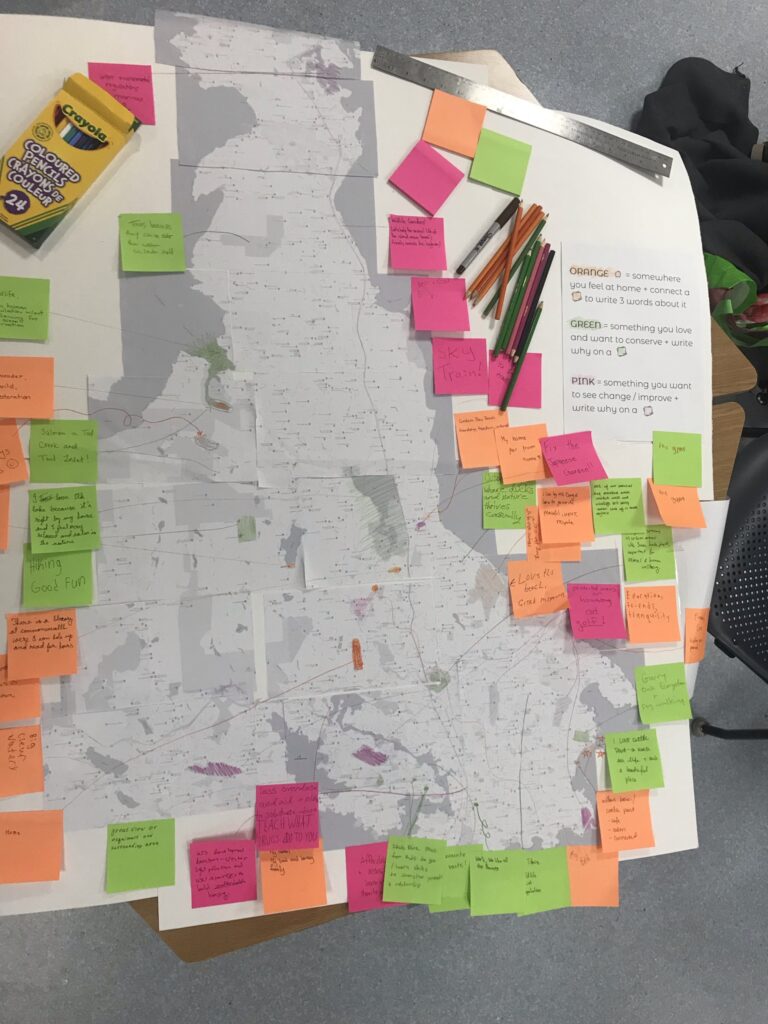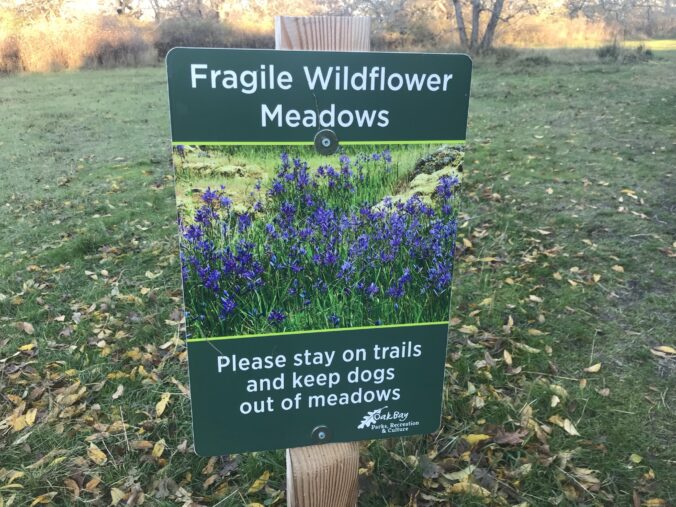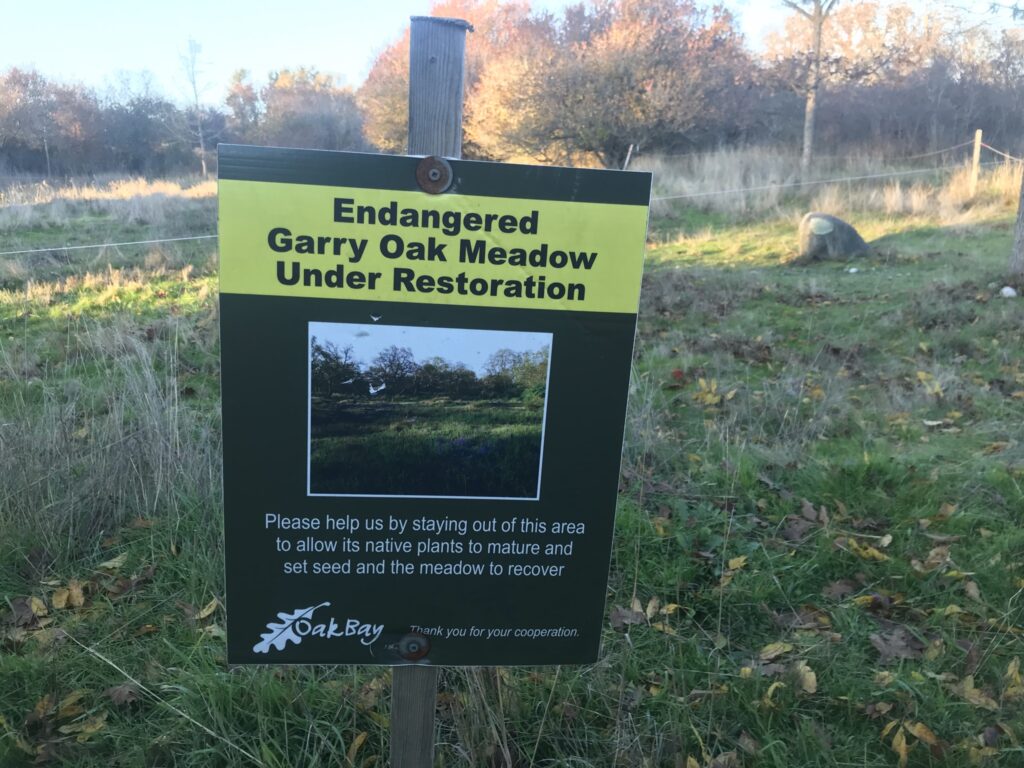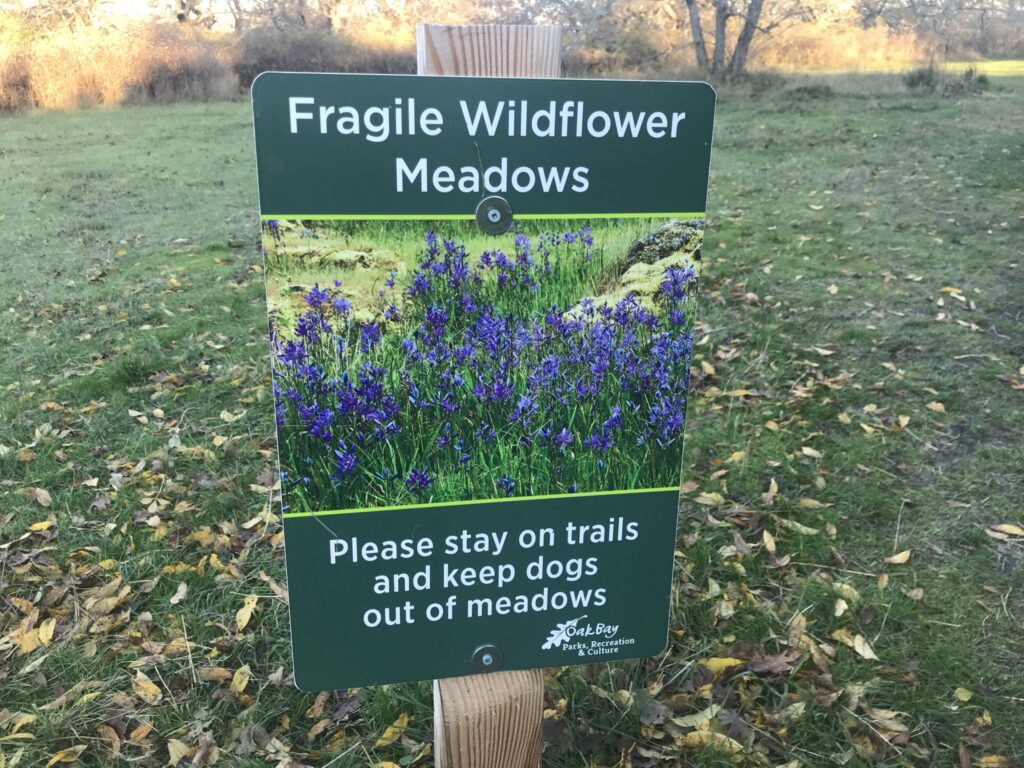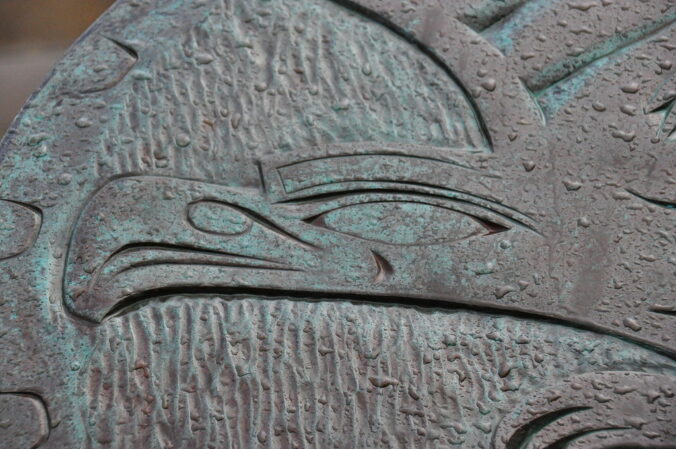I’ve been thinking a lot about land acknowledgements over the last few weeks as most of my classes begin with a slide acknowledging the land. My first post on here was about understanding UVIC’s land acknowledgement, so I thought I would bring this full circle and research and interrogate the idea of land acknowledgements a bit further.
In the Lekwungen Tung’exw: Learning from the Land webinar by SD61, they note that we do land acknowledgements for the following reasons:
- Opportunity to recognize our connections and responsibilities to one another
- Provides the foundation to rebuild trusting relationships
- Welcomes are meant to greet visitors with a good mind, heart and feeling
I think these are great reasons, and am impressed with how widespread land acknowledgements are these days, compared to when I was in school. In Toronto, where I was last living, each day began with a land acknowledgement in all of the public schools over the PA system. At the same time, I am wary of how easy it has become to not think about the words that we’re saying or hearing in a land acknowledgement. So often it can feel like a box to tick, another housekeeping item following “the bathrooms are behind you on the left.” Worse still, it can feel as though land acknowledgements aren’t exactly accomplishing all that much. At best they’re a reminder of something we should already know. At worst, they’re making us feel as though we’ve done something when we really haven’t done anything at all.
There is a fantastic article on the New Yorker entitled “Canada’s Impossible Land Acknowledgement.” In it, the author writes:
“The hypocrisy of the country can be so startling exactly because we repeat our good intentions so insistently. We say, over and over, that we want desperately to atone for a crime while we’re still in the middle of committing it.”
This is the challenge with being a settler and reading a standard land acknowledgement; without action it can feel like hypocrisy. I am grateful to have been in circles before where people are strongly encouraged to take land acknowledgements a step further, and it was fantastic to experience that.
Shana Dion, the Associate Dean of First Nations, Metis, and Inuit Students at the UofA notes that land acknowledgements are “…not meant to be set language. It’s built to be fluid enough so it resonates within yourself when your saying it, so that its not just words you’re reading from a script, but that it comes more from the heart.”
This is what I believe is the next step of land acknowledgements. They have successfully made their way at the beginning of most gatherings, but now it’s time to find ways to push the envelope. In classrooms, I don’t imagine it’s realistic to do an in-depth land acknowledgement every class, but it is something that I imagine you can integrate regularly. Perhaps weekly, and on particular occasions, such as Orange Shirt Day / Week.
So how might we “level up” our land acknowledgements as educators with our students? The below information has been pulled from what I learned from a good friend and Metis artist and activist Talitha Tolles, as well as from an Anti-Oppression workshop I did with Rania El Mugammar, as well a some of my own research and thinking since.
THE FIVE STEPS
Step 1: Reflection
The first step before doing a land acknowledgement that is so often skipped is reflection. Ask yourself why you’re doing it? What is the context? What is the history of the land you’re on and you’re territory?
Step 2: Acknowledgement
Once you’ve done the thinking you need to, your land acknowledgement may include something similar to the traditional acknowledgement that you’ve seen (e.g. “we’re on the traditional territory of the Lekwungen speaking peoples.”) But rather than the last step, this is merely a component.
Step 3: Self-Location / Relationship
Land Acknowledgements should be personalized. How do you come to this land? What is your history / background? For instance I may identify myself as a settler who was unaware of the Indigenous history of the place I grew up, and the Indigenous people that lived on it. Doing this not only forces you to reflect and locate yourself in relation to the issues you’re about to speak to, but it encourages your students to do the same.
Step 4: Context / Connection to Today’s Issues
Acknowledging a historical relationship to the land, and perhaps a historical wrong-doing can numb the feeling that anything needs to happen today. There are tons of Indigenous movements, struggles, and things to celebrate, so take this opportunity to highlight them to contextualize the land acknowledgement, and highlight the present day realities.
Step 5: Call to Action
Perhaps the most challenging, but maybe the most meaningful, is rooting our land acknowledgements in a call to action. What is something that your students can do (either now, or later), to advance reconciliation in their community? So often people feel paralyzed or unclear about how to actually advance reconciliation, so why not support them in this? By pointing people to solutions, a land acknowledgement can move beyond the theoretical or symbolic, and help people feel that they are taking tangible steps in the right direction. This could look a thousand ways including:
- Pointing them to a petition to sign or an upcoming protest or march
- Facilitating the learning of a word in a local Indigenous language
- Teaching them something about Indigenous history, culture, or issues that they may not have known before
- Facilitating their own critical reflection to the Land and Indigenous nations
- Watch a video or listen to a podcast clip of an Indigenous person to center Indigenous voices
That might seem like a whole lot of work compared to the more traditional land acknowledgement, and in many ways it is. At the same time, the final product still might not be more than 4 or 5 sentences, and the steps can of course be tailored, combined, and reimagined to best suit your context.
SOME EXAMPLES / OTHER IDEAS
One of my favourite land acknowledgements was at my wedding. My good friend Holly, who was officiating, called upon people to close their eyes, and use their senses to connect to the Land around them and the people who had cared for that land throughout history. It didn’t have all of the above 5 steps, but it did have most of them, and many people were talking about the impact it had on them afterwards.
In a class I had at UofT, Professor Hilary Inwood would take the first 10 minutes to do a land acknowledgement by centering an Indigenous person’s voice and facilitating a reflection or discussion. For instance, we saw a land acknowledgement done by an Indigenous person, a poem, and an interview with a young Indigenous water activist Autumn Peltier.
In a workshop I did over the course of many weekends, the facilitators built on previous land acknowledgements each time. For instance we wrote a poem interrogating our own positionality in week one, which we would return to and use as a launching point in future weeks. In the final week, we were challenged to commit to and share a tangible action that we would take in our lives. In this way, we were able to grapple with the complexities of the topic in more depth, which I think could work fantastically in a classroom setting.
If you’re looking to experience a few more ideas, there’s a few ones where you can actually hear the facilitator, Nadia Chaney give the acknowledgement here. Her examples include a Meditation on Land, a history of colonization as a lived reality, and a group poem. Nadia is a fantastic facilitator who uses the creative arts to help enrich reflection and facilitate empowerment.
